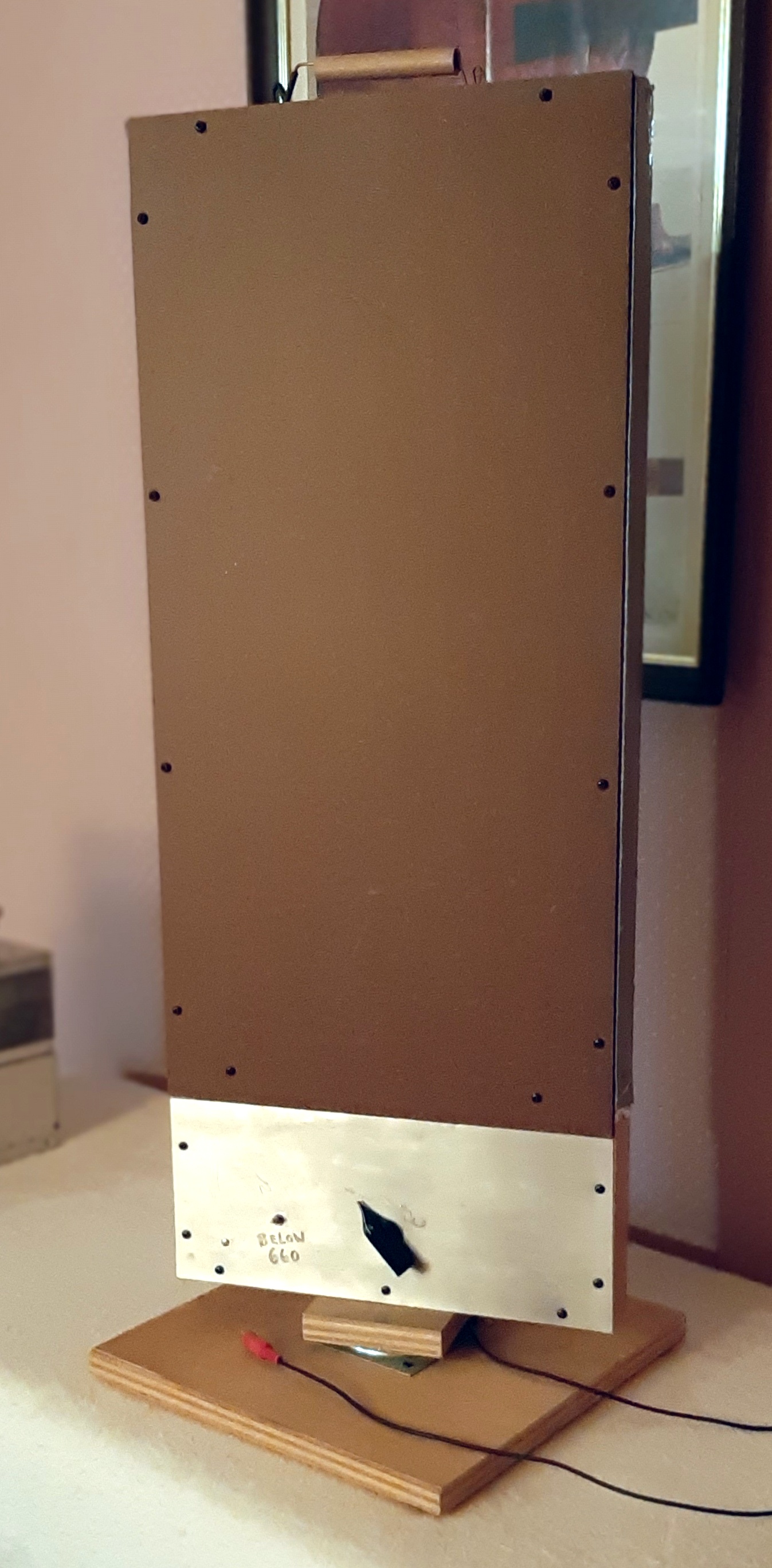The New Jersey Antique
Radio Club has been running a broadcast-band DX contest every January
since Y2K. We've show, over and over, that a tuned loop antenna
is the best bet for the casual AM band DX'er,
This only works well with radios that have a fair amount of amplifications, e,g, superhets. Simple radios and crystal sets will need wire outside to get DX.
This only works well with radios that have a fair amount of amplifications, e,g, superhets. Simple radios and crystal sets will need wire outside to get DX.
Your home is often an interference zone with noise being conducted about by the electrical wiring. In addition, the wiring, pipes, and ducts form a Faraday shield keeping the electrical component of the desired signals out.
The noise is largely an electrical field. So a wire antenna deployed inside picks up a lot of noise. However, a loop antenna responds to the magnetic component of the desired radio signal and rejects the electrical component. Also, the magnetic component penetrates the building better.
A loop antenna is a magnetic-field probe that samples
the passing electro-magnetic wave.
The antenna has maximum pickup in the plane of the loop windings, and deep nulls perpendicular to that plane. By rotating the antenna, you can reject unwanted signals. E.g., in the NYC area, you can null out Atlanta, GA on 750 Hz, and sometimes hear Caracas, Venezuela on the same frequency.
The antenna has maximum pickup in the plane of the loop windings, and deep nulls perpendicular to that plane. By rotating the antenna, you can reject unwanted signals. E.g., in the NYC area, you can null out Atlanta, GA on 750 Hz, and sometimes hear Caracas, Venezuela on the same frequency.
As event organizer, I've published a number of loop designs to encourage participation. The designs got simpler as the years went on. We'll look at them in reverse order.
The Vampire Loop

The Caveman Loop
My
Original from 2002
Basic design is covered HERE, I added an enclosed frame with some aluminum-foil shielding, and a lazy-susan bearing. Leave a gap in any shielding so it doesn't become a shorted turn on the loop winding.

on
the AM broadcast band
Return to the Skywaves Homepage